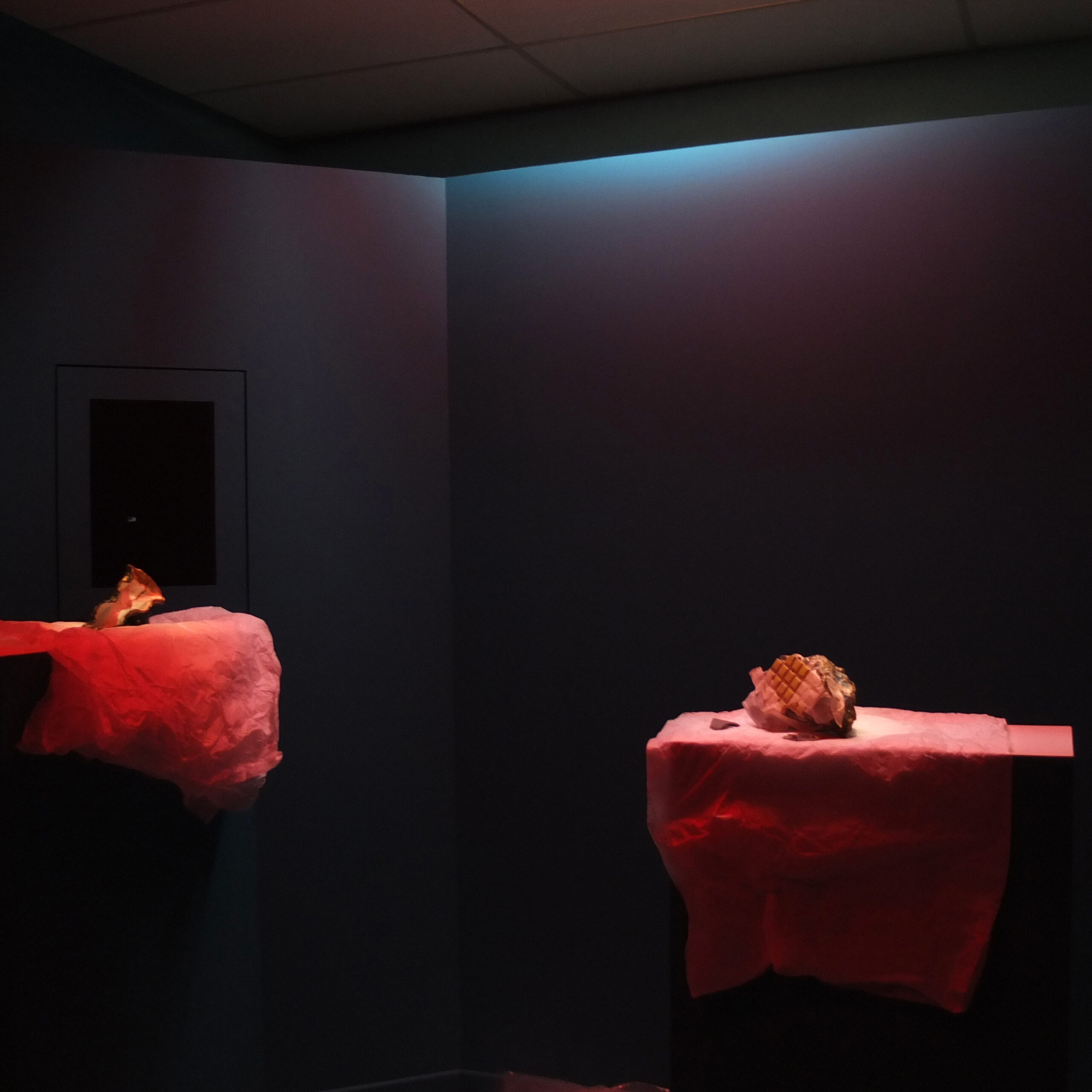Thank you. People rarely write about my work, and I was quite surprised when your text was shared with me nearly two months after it had been published (by someone completely unrelated to the institution). That speaks to me as an ironic parallel to your experience of the choking climate of SB and as an example of how a large-scale institutional production ‘weathers’ a larger art ecology. But perhaps more on that should be saved for a face-to-face correspondence on a sunny day.
It was in reading your piece that I discovered something shared between Trevor Yeung’s piece and mine. While expressed in differing ways, this commonality is significant for the not to be neglected fact that both of our contributions speak from the conditions of Hong Kong via acts of departure. Both The Pavilion of Regret and The Last Emporium contain the participatory element of the ‘giveaway’—in the former instance an offering to visitors to take house plants away, and in the latter a more risky and subtle hint to ‘steal’ one of only three artworks present in a formal installation. You ambivalently debated your participation with Trevor, and with me, probably the thought never crossed your mind, but you did with the help of air conditioning find your own takeaways. It could be said to be a failure on my part that by the time of the end of SB, most likely not a single other visitor will ‘get’ the dare, leaving the perhaps even more confusing two empty pedestals and two awkward pieces (one was taken just after the opening) as a different mode of participation which you still found respite in, and for that I am also happy. We had had several discussions with the production team and curators about how much explanation should be given to visitors, and some ideas were put forth to write instructions directly (citing the ‘obedience’ of Singaporean art-goers) while others insisted on the least didactic means possible, pointing out the contradictions of an offering to theft. In the end, with only three possible instances for taking away over a five-month duration, I opted for the most opaque of means, an absence of which you were also astutely aware: say nothing.
Whether or not the four pieces in Singapore (one is planted elsewhere in the city, the location of which can be discovered via the website) actually move is a precipice of regret for me, but I am also a believer in the relinquishing of authority on a borne artwork, so the last months have been an attempt to shift the conversation, and your text has contributed to that, so I thank you again. I like the fact that Yeung’s Regret actually emerges from rot to offer a more optimistic possibility for our survival—that in contrast my mappings find themselves lost in the complex psychogeographies of diaspora, identity, and sociopolitical uncertainty. I also consider the cloudiness of the work a result of the climates of both Hong Kong and Singapore, so your meteorological reading of SB is doubly apt. Talking about the weather is a typical stand-in for when we have nothing to say, or to cordially mask that which we are unable to say. It is therefore at its essence a kind of balmy ambivalence that, for however trite it may be, you are mindful of. I think we can both appreciate and investigate this in the same manner as certain basic salutations like “親愛的”, “Yours Truly”, and “Have you eaten yet?”
So with all of that, dear and truly, I hope this letter finds you well-fed and in continued temperate reflection.
With much gratitude and warmth,
e
___
From “Natasha: A Biennale By Any Other Name“, Arts Equator (6 December 2022):
It’s surprising to fall asleep in the middle of an art gallery, and I think back to your wish for visitors to form more intimate connections with art. I question this moment of expansive quiet, calm, and wonder again, if you would humour me, if it is part of your intention for this to be born out of overwhelm.
The next moment was in the form of Elaine W. Ho’s The Last Emporium, in that stifling 5th floor of Tanjong Pagar Distripark. A nondescript room I’d almost missed. If not for that little standee with your name on it signalling towards a grey door, I would have thought it was a storage room, and walked right past it. Thank you for letting me know of this nook, Natasha. The droning sounds that the 5th floor of Tanjong Pagar Distripark constantly boomed were grating against my ears, and I was reaching my threshold. Along with the stifling heat and limited air circulation, I really wanted to bolt out of the space. And it was at that moment when I turned to leave that I saw that little signpost pointing me towards The Last Emporium, and how lovely it is, flooded with red light and cool air.
It is with this renewed levity that I discovered that the room, its sounds, responds to my movement. There were no “Do Not Touch the Artworks” signs around, only sculptures made from ceramic vases and other stray materials, and two seemingly empty white plinths in the space. Voices and words belonging to Chen Jialu, Amaya Julia Gutlerrez, Elaine W. Ho, Qu Chang, Levin Tan, Regina Wong Hon-lai, Yin Yin Wong and Soledad Dominguez Yapus start and stop, converging and diverging as they read to each other, to me. It was by pure chance that I realised by grazing my fingertips across a small silver nub on the “empty” plinth, I could make the voices pause, and restart. I stood there for a long time, Natasha, playing with the voices in the simple way Elaine allowed me to. It felt like I unlocked an interaction I didn’t know was possible with you, and it was delightful.
